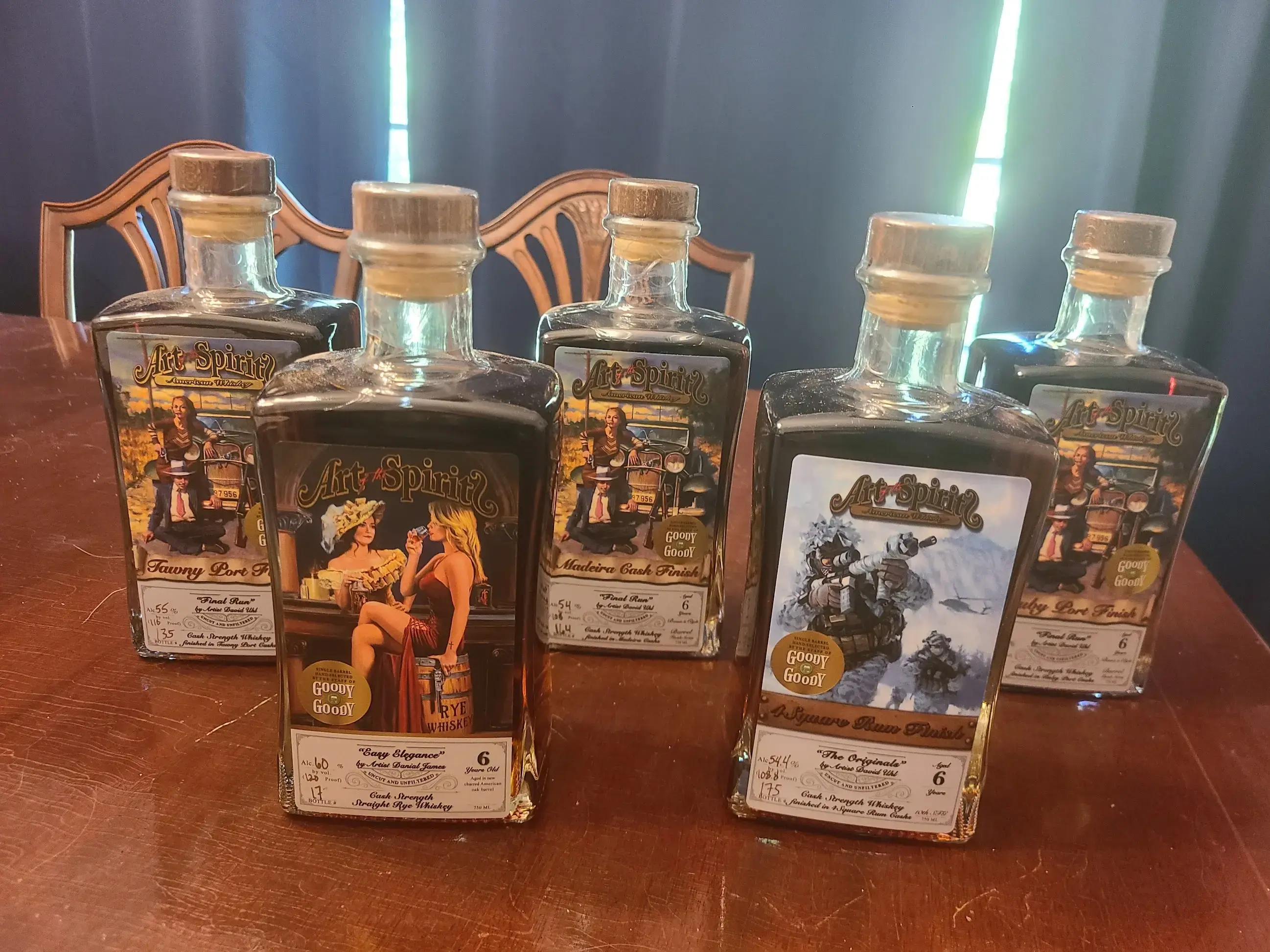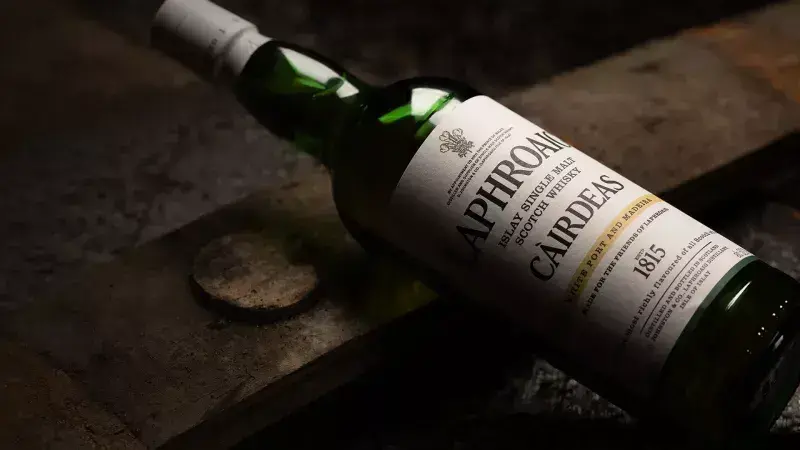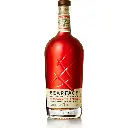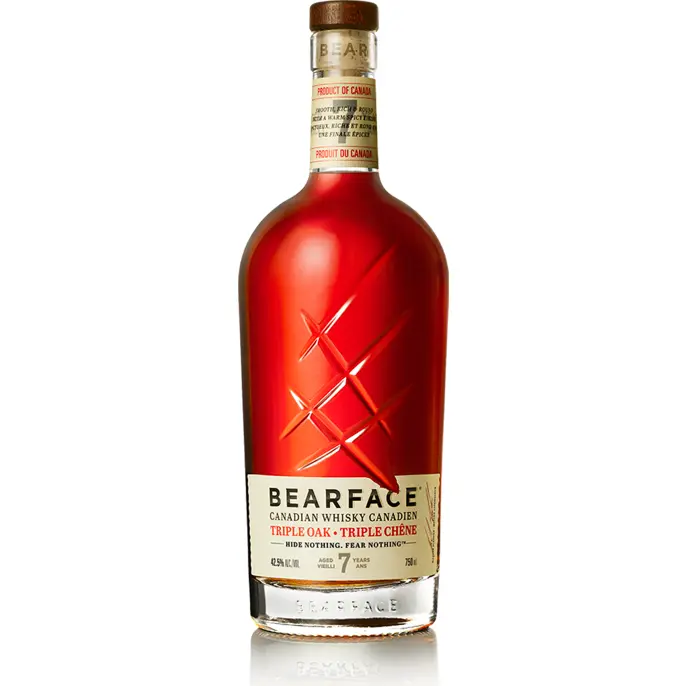Search
Ardbeg Anthology: The Harpy's Tale
The first entry in Ardbeg's new cash grab Anthology series, The Harpy's Tale has been matured for 13 years in rare Sauternes wine casks and married with classic Ardbeg ex-bourbon. As per Ardbeg standard, it is not chill-filtered, and no color is added. It is bottled at 46% ABV.
For my review, I drank this neat from a Glencairn after letting the pour sit 10-15 minutes.
Nose
The first thing that hits me here is a strong sweet undercurrent of sugar cookies, pineapple, and vanilla. Following quickly behind that is a mix of peat and a metallic tang reminiscent of copper. Following behind it all is a faint waft of ocean brine. Overall, it is very pleasant and suggest a complex spirit.
Palate
The nose does not lie. This is a complex spirit, and there's a lot going on with the flavors. At various points I caught strong hits of spice, including black pepper, coriander, cardamom and clove. There's sweetness there, a creamy vanilla mixed with hints of apricot, but not as strong as I expected after the nose. The peat is very strong, and brings with it some bitter notes that stay with you well into the finish. The seawater brine is here, too, as are some notes of pine.
Finish
I was disappointed at first with how quickly the finish dissipated, but halfway through my first dram the finish was lingering significantly longer. Pepper and spices mixed with vanilla coat the tongue pleasantly. However, they're joined by a not-so-pleasant lingering ashy bitterness that I find hard to ignore. There's also lingering peat, as well as raw wood that at times strongly reminds me of popsicle sticks.
Comparisons
I'm trying to include at least one comparison in my reviews since I find the tasting notes to be so subjective. Being able to use other bottlings as baselines for comparison seems a little more... useful? For this bottling, though, I'm not sure which would be the most appropriate Ardbeg to compare it to.
The Ardbeg 10 can be a good baseline for comparison for anything in the Ardbeg line, since it is part of their core line and has some very characteristic notes. The Harpy's Tale does fairly well compared to the 10, in that it is far more complex. I like Ardbeg 10 quite a bit, but it is fairly simple. Harpy's Tale is nowhere near as sweet, nor does it have the strong citrus flavor I associate with the 10. Both have strong peaty smoke, but the Harpy's Tale brings significantly more ashy bitterness with the peat. Though both are bottled at 46%, the Harpy's Tale does have a stronger finish.
Considering the price point and the complexity of the Harpy's Tale, Ardbeg Uigeadail is worth mentioning, too. I find Uigeadail to be much more complex than the 10, as well as a bit pricier. Harpy's Tale beats Uigeadail in both regards. It has a lot more flavors vying for attention, and is certainly much more expensive. However, Uigeadail just feels more... polished. Some of that may be the difference between cask strength and the 46% Harpy's Tale release. I think Harpy's Tale may have been better served bottled at cask strength. I'm not sure if it would have avoided the lingering ash-and-popsicle-stick finish, but certainly the $140+ price tag would have been more palatable if it were cask strength.
In the end, though, I think the main way that Harpy's Tale loses out to Uigeadail is that it is, well... just kind of all over the place. I find the various notes interesting. Enjoyable, even. But I'm simply not sure they work together. Certainly some of the notes seems to fight against others. Sometimes that works well, like the peat countering the sweetness on the palate. But in other cases I just don't think it works out. Uigeadail, by comparison, is a strong, polished whisky that builds a cohesive whole from the sum of its flavorful parts.
Conclusion
I was a bit hesitant to pick this one up, despite my general appreciation for Ardbeg. The only one of the special releases I've tried was Scorch (for the record, I liked it, but I also didn't have a lot of other heavily peated whiskies to compare it to). The reviews across the recent special releases have been pretty consistent in their criticisms: the uniqueness isn't justified by the premium price, even when the uniqueness "works".
I'm inclined to agree, including the Harpy's Tale.
Overall, I did enjoy it, and I am glad that I pulled the trigger on this bottle. It's interesting. I do enjoy savoring it and moving my focus from flavor to flavor in a way I can't with the other Ardbegs I've had (10, Wee Beastie, Uigeadail, and Scorch). I wish it worked better, though, and while I wouldn't turn down a dram offered to me, I also wouldn't buy another bottle. There are too many jarringly off notes, and the price makes me a bit resentful that it isn't cask strength. I have a suspicion, as well, that some of the unflattering notes are due to the watering down.
Art of the Spirits 5-in-1 Mega Review


While perusing my local liquor store over Labor Day weekend, I found something I simply couldn't resist. Art of the Spirits is a small distillery out of Colorado Springs with a few interesting selling points. Most obviously, the artwork - each bottle has a label based on an oil painting by Danial James or David Uhl, two Colorado artists made famous by their work for Harley Davidson motorcycles. I'm a big believer that a handcrafted whiskey is a work of art in its own right so I love the pairing here. Less obvious is that this distiller has specifically targeted the barrel pick market. Each of the five whiskies shown here is a cask strength single barrel selected by Goody Goody. The three Bonnie-and-Clyde themed "Final Run" bottles are actually the same spirit, just finished in different ways to bring out different flavors, whereas we also have as "Easy Elegance" and "The Originals" are a bit different. All five bottles were in the $80-$100 range each at my store.
I will put my individual reviews below, but overall I am impressed by Art of the Spirits. This is a very competitive price point, and none of these are likely to become an everyday favorite. Keeping in mind that these are cask strength limited editions I always felt like I was getting my money's worth though. Which is best? That's hard to say. "The Originals" was my least favorite and the one of the five I wouldn't recommend. The flavor profile was certainly unique but not something that really clicked with me. I can also say that I preferred the Ruby Port "Final Run" over the "Tawny Port" as those are similar enough that a head-to-head comparison feels fair. Between the Ruby, the Madiera, and they surprisingly complex Rye "Easy Elegance" I find it impossible to crown a victor however. All three are excellent and which I prefer depends entirely on my mood at the moment.
Laphroaig Cairdeas 2023 - White Port and Madeira


Distiller: Laphroaig
Product: Cairdeas
Bottle: 2023 - White Port and Madeira
Category: Islay
Aged: Three quarters finished in second fillMadeira, one quarter finished in first fill white port
Nose: Green apples and peach cobbler over the distinctive Laphroaig peat smoke
Body: Harsh peat smoke is quickly tempered with candied oranges, honey, vanilla, and buttery dinner rolls.
Finish: Miles of lingering campfire smoke with a bit of salted caramel underneath.
Activation: Helps to marry the sweet fruits with the oily iodine peat, creating a single coherent flavor where once there were distinct layers. Recommended.
Notes: Laphroaig Cairdeas is one of the longest running special editions in the industry, although apparently this is the very first offering by new master distiller Barry MacAffer. Certainly more distinctive than last year's unimaginative “Warehouse 1” release, this bottle grows on you with time. It doesn’t break much new ground - aging harsh peats in wine casks is a time honored tradition by this point - but it is remarkably well balanced, with none of the chemical or medicinal harshness that you might expect. Things might be looking up at Laphroaig.
Compass Box Canvas


Distillery: Compass Box
Product Line: -
Product: Canvas
Aged: Vino naranja and American oak
Category: Blended
Nose: Delicate custards and marmalade. A citrus of bitter sort, with under-ripe figs.
Body: Rich honey over apricots and oranges. A light, English muffin sort of biscuit. As it goes on, a rich dark chocolate encroaches.
Finish: A bold, malty surprise. Loses nearly all the delicate fruit notes in favor of wheats and grains and fresh baked bread.
Activation: Really opens up some of the rich juicy fruits. Oranges, grapes, pears. Recommended.
Notes: I've always been fond of Compass Box, but they went through a phase for a while where seemingly every new limited release was (over) aged in a sherry cask. I'm glad to announce that Canvas breaks this pattern- in fact, there’s no sherry here at all! Just some Spanish orange wine, a beverage I didn’t even know existed until I picked up this bottle. It’s sweet and rich and creamy and endlessly drinkable, without that bitter or medicinal quality that can frequently come through with sherried casks. After such a fruit forward body, the malted finish is a welcome surprise as well. One of the best blended malts I’ve had in a while, though it is on the pricier side at ~$135.
Bear Face Elementally Aged Triple Oak


Distiller: Bear Face
Product: Elementally Aged
Bottle: Triple Oak
Category: Canadian
Aged: 7 years in ex-bourbon American oak barrels, then finished in French oak red wine casks and air-dried virgin Hungarian oak.
Nose: Thick with caramel, butterscotch, and call me crazy but is that maple syrup?
Body: Buttery creme brulee with candied walnuts and pecans. Traces of campfire smoke and rum-like molasses.
Finish: Faint pine nuts and a mild biscuit.
Activation: Unnecessary.
Notes: For a long time I’ve considered the cheap Canadian whisky market to be good for fighting off the bitterly cold north winds and not a whole lot more. Couple that with a scammy sounding “Elementally Aged!” proclamation and suffice it to say that my expectations weren’t high for Bear Face Triple Oak. But let me immediately say this is a damn good whisky. It’s rich, full bodied, and complex. Seven years is a fair amount of time, and their silly name just means that it has been living in a metal shipping container in Canada and therefore exposed to extreme temperature swings, which serve to speed up the aging process. Factor in the low price and this is a fantastic hidden gem.